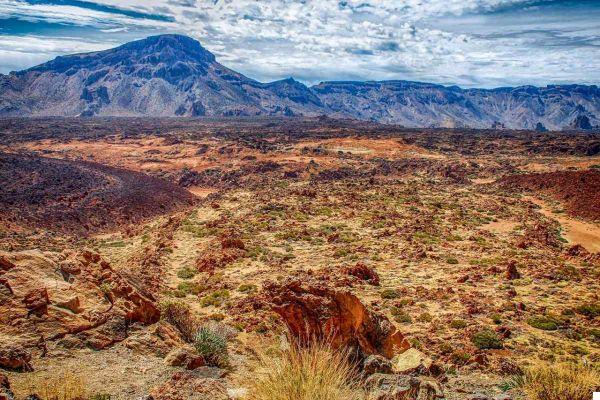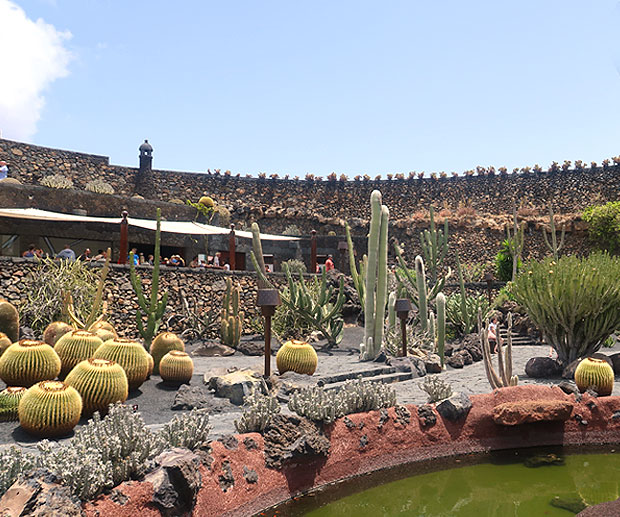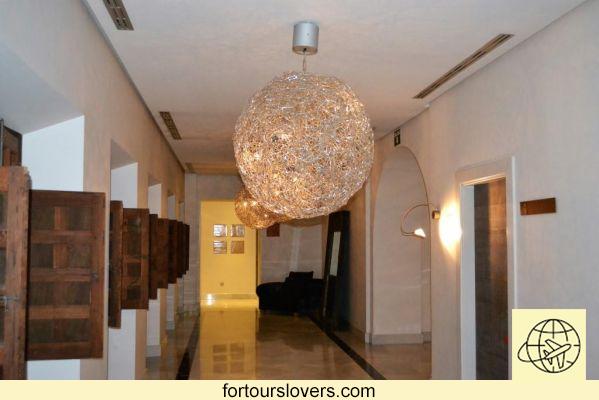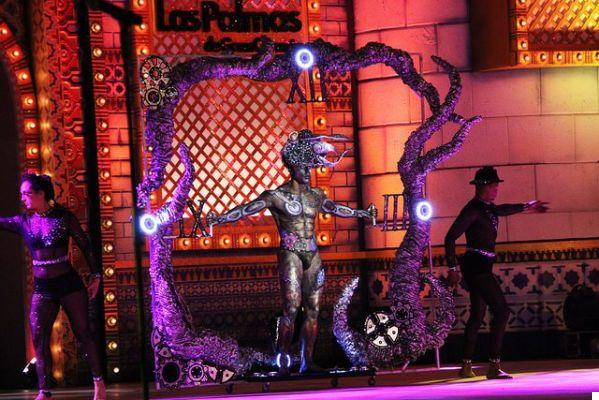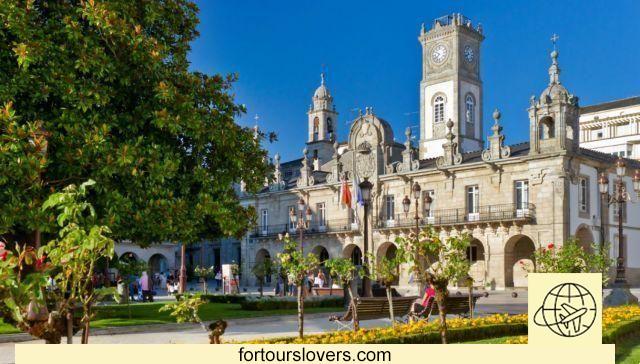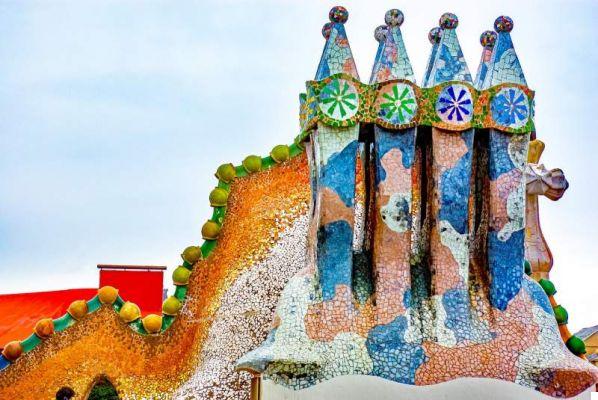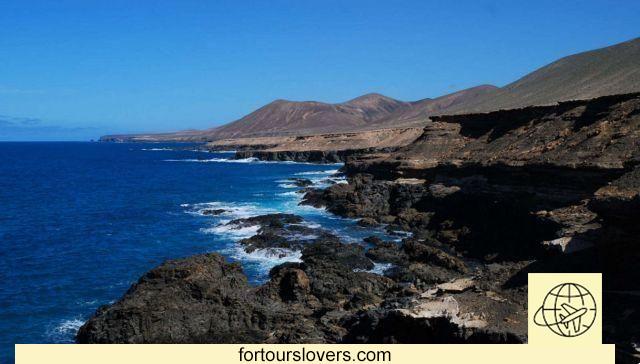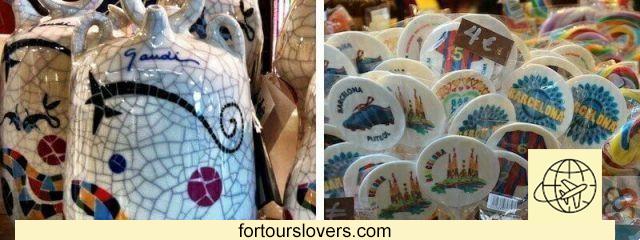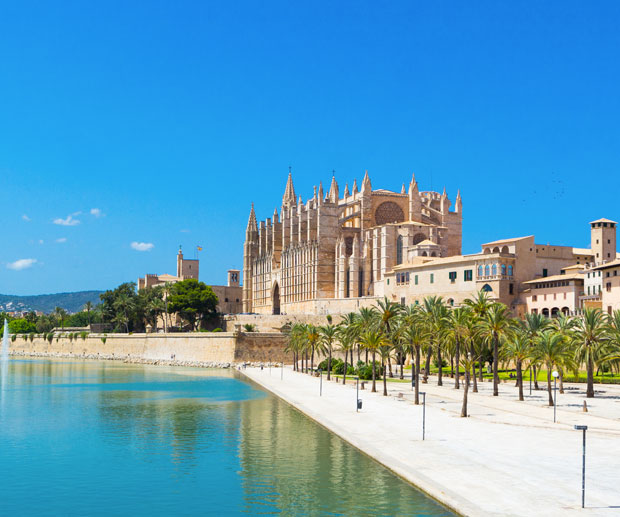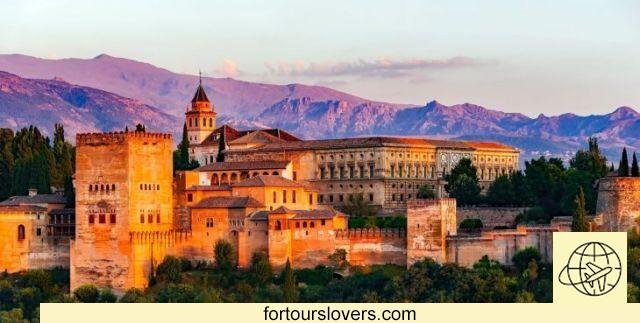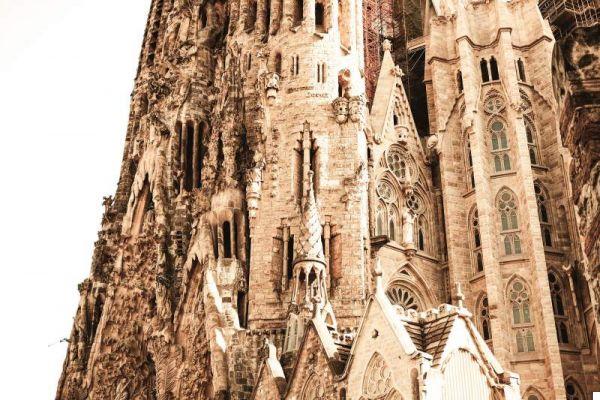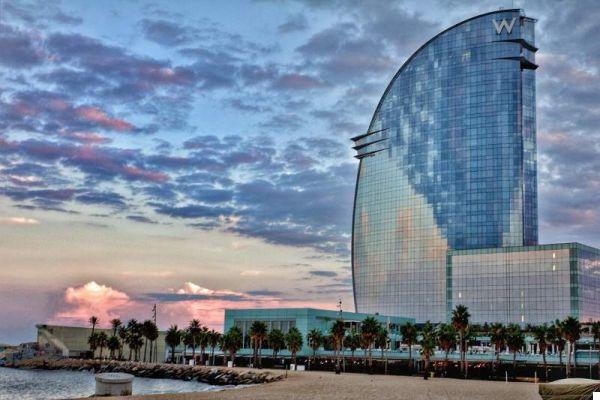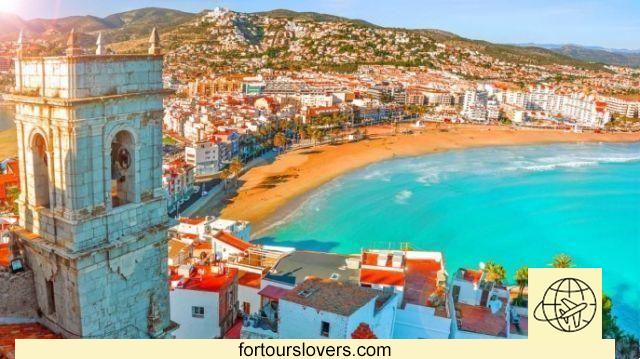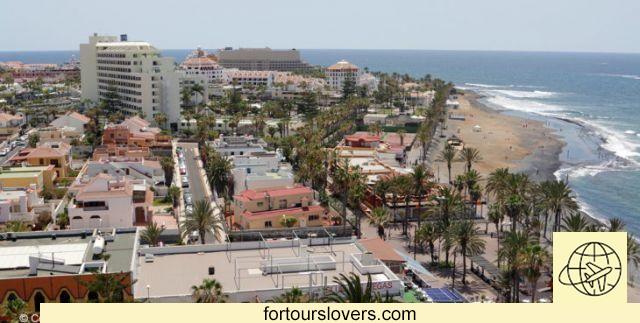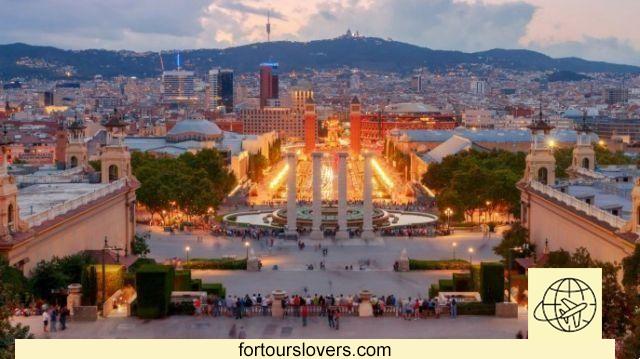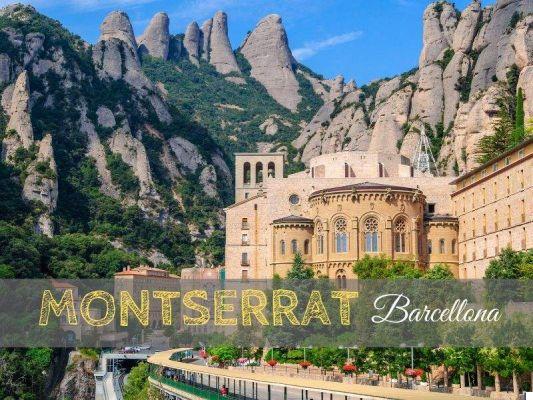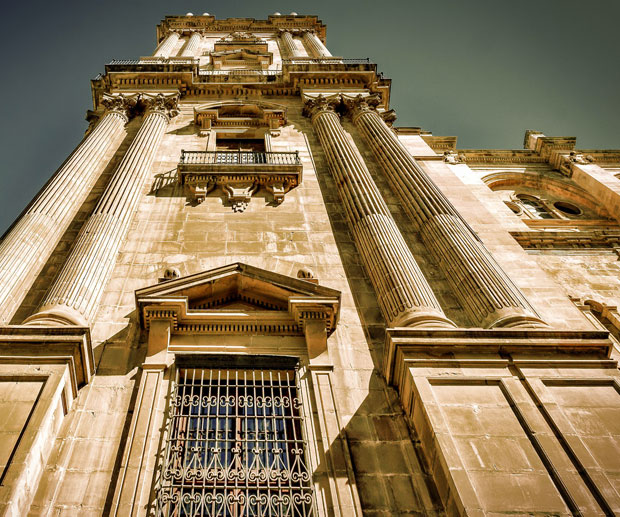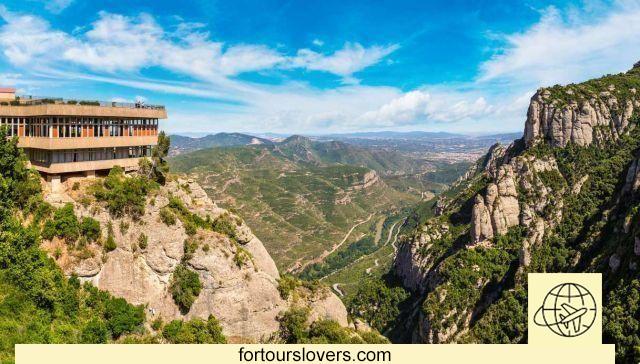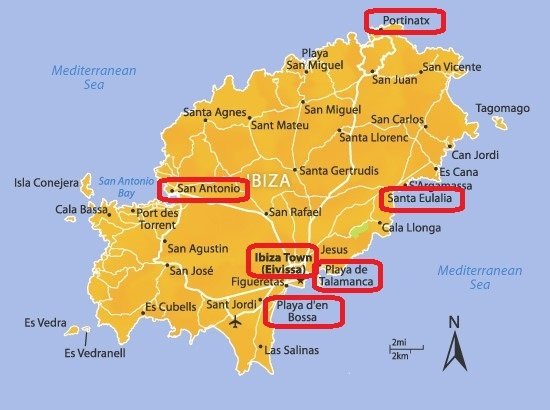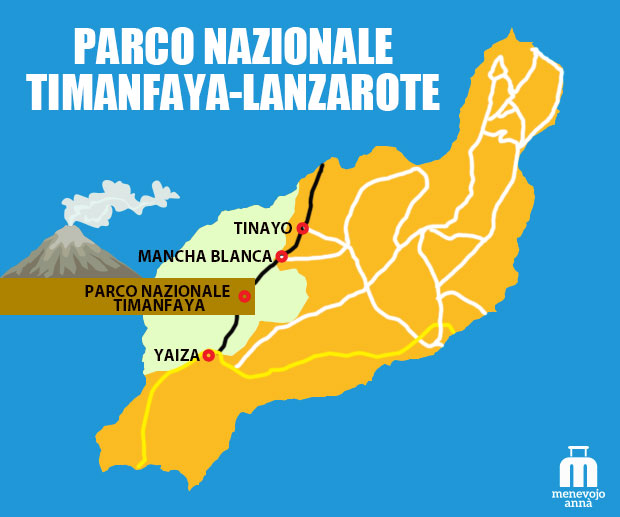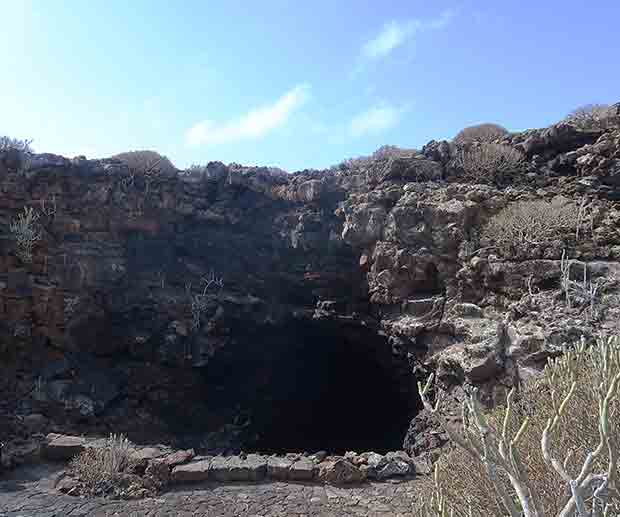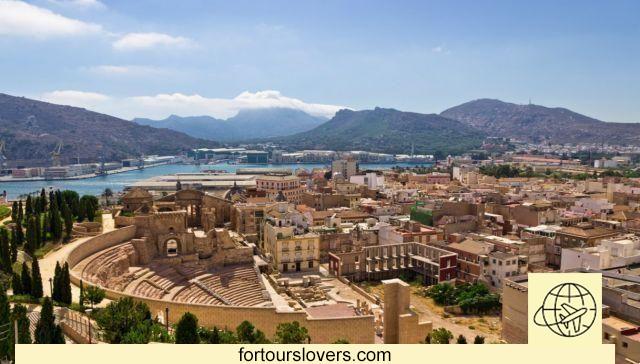
Cartagena is closely linked to the sea and thanks to its port it has seen numerous cultures pass by that have left traces to be discovered throughout the city.
Located in the autonomous community of the Region of Murcia, Cartagena It is a city of more than 200.000 inhabitants and its name derives from the Latin name Cartago Nova. This little-known resort was annexed to the kingdom of Castile after the conquest of Ferdinand III the Saint, who freed it from Arab domination and has suffered alternating fortunes over the centuries. Let's see together an itinerary that will allow us to discover the historical monuments that bear witness to this past while we stroll lazily through the streets of the historic center of Cartagena...
From the port you can admire the long avenue parallel to the Wall of the Sea, built by order of Carlos III in the 5th century and which delimits the historic center of Cartagena. Continuing, you will find yourself in front of two imposing sculptures: El Zulo, 1888 meters high, created to commemorate the victims of terrorism and the Cola de Ballena, which represents the tail of this animal and which you can admire as it appears in the waters. in front of the Pier's boat dock. Continuing your walk you will reach the Naval Museum of Cartagena where model ships, nautical charts and various onboard instruments are displayed, but above all the first submarine in history built in XNUMX by Isaac Peral and which will delight your children. Next to the walls of the Sea Wall is also the military arsenal, within whose walls the entrance gate to the city is located.
At the entrance to the historic center of Cartagena you will find the City Hall, an example of modernist architecture that boasts large staircases and paintings that embellish it. If you wish, you can learn more about the palace through a guided tour where you will also be told episodes of the city's history. Continuing towards Parque Torres you can admire the oldest church in Cartagena, the Cathedral of Santa María la Vieja and the Castillo de San Felipe, which stands on a hill with a spectacular view and was once used as a fortress. Cartagena is a city rich in archaeological beauty and a testimony of the wonderful Roman architecture are undoubtedly the ruins of the Amphitheater from the 6.000st century BC. which is located in the Plaza Condesa de Peralta and had a capacity of XNUMX people.
Leaving the past for a moment, another place that should not be missed is the Main Street, the street that leads to the modernist part of the city. This is the main street of Cartagena and is home to numerous bars and restaurants where you can taste the typical "tapas" as well as shops where you can buy delicious souvenirs while you walk admiring the Houses of Cervantes and Llagostera. The first was built in 1900 and is one of the first buildings built in this particular style, decorated with bronze reliefs and ironwork and characterized by its viewpoint. The second, on the other hand, has a façade covered in ceramic with figures representing Mercury and Minerva.
Your journey through the center of Cartagena ends at the City Hall and Heroes of Cavite Plaza, where you will be welcomed by two important monuments of the city: the Replacement Sailor and the Monument to the Heroes of Cavite created after the conflict between Spain . and the United States of 1898.
If you want to take a break and try something gastronomic delight of Cartagena There is surely no shortage of good restaurants, where you can order the caldero, a risotto in fish broth accompanied by aioli, the typical mayonnaise flavored with garlic, but also the exquisite paella or fig bread. And to finish the meal on a high note, here is the Asian coffee, which includes coffee, condensed milk, cognac, cinnamon and liqueur.
Cartagena is also a coastal city so if you choose to visit it in the warmer months you cannot miss a stop at the curtain cove beach, accessible in ten minutes by bus from the center, while if you want to organize a trip outside the city, just 30 kilometers from Cartagena you can reach the Cabo de Palos peninsula with its coastline made up of coves bathed by the crystalline sea. . The island is located about two and a half miles from the coast. Ant which represents one of the true attractions of the Cartagena area, especially thanks to the beauty of nature and its uncontaminated seabed. Here it is possible to do wonderful diving to admire not only the corals and marine fauna, but also the remains of sunken ships that will undoubtedly intrigue lovers of the genre.




